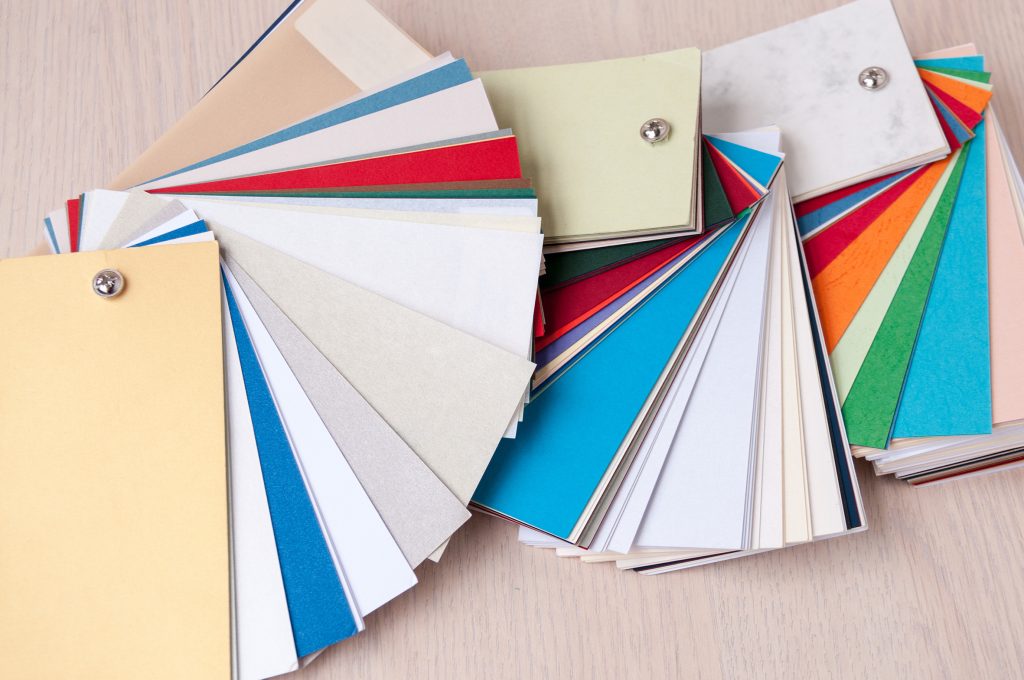Before you put ink to paper, there is a lot to consider. The paper, weight and finishing that you choose can and will have an enormous impact on the finished result of your printed brochure.
Naturally, the first thing that you will think about with printed brochures and materials is your content, graphic design and photographs.
Then you will probably decide on the size and format of the brochure, how many pages you’ll need and of course what quantity of print you require. Not forgetting the budget that you must work within.
It is at not until this stage that you will start to think about the type and weight of paper that it is being printed on. But before you go to print, we would urge you to consider several important factors, no point in spending all this time and money on a great new brochure and then printing it on the wrong paper!
What paper should I use?
What type of paper do you want to print on and what type of paper is most suitable for the finished brochure that you and your customers need?
What weight of paper would you like to use and what will the postage weight be?
Would you like to use coated paper or uncoated?

The weight of the paper is the main factor in determining the final weight of your brochure and this can have a major impact on the delivery costs of your direct mail campaign (if that is a consideration). As a rule of thumb, the thicker a sheet of paper is then the heavier it tends to be unless the paper has been coated.
The type of paper you use will have an impact on both the cost and quality of your brochure. However, the quality of the paper will provide an important first impression for your clients. Also, you should think about show through when deciding on the paper weight as bright colours and bold text can be seen on two sides of a page, especially if the paper is thin and of poor quality.
Choosing the right paper weight for your brochure is important and there is no doubt that this can be enhanced further if you choose a lovely coated finish.
A guide to paper weights in gsm
Here is a quick guide to using different paper weights when printing. Paper weight is measured in grams per square metre (gsm). In general, the higher the gsm rating, the heavier and thicker the paper.
80 – 100gsm
The usual weight of standard office paper, rarely used in brochures.
110 – 120gsm
The usual weight for stationary paper including letterheads and compliment slips.
130 – 170gsm
Heavier and more durable paper commonly used for posters, leaflets, flyers and internal brochure pages.
170 – 200gsm
The midway point between paper and card, suitable for brochure covers, double-sided flyers and more luxurious posters.
200 – 250gsm
The starting point of heavier card or board can bring a real quality finish to a brochure cover.
300 – 400gsm
Anything over 300gsm is a board and this is usually the weight at which business card’s start. Board can also be used as a cover for brochures, but it is important to consider the stitching and folding implications of using a heavy board for a cover.
400gsm plus
Business cards would be considered very good quality at above 400gsm.
When finalising your print requirements, it is important to consider both the weight of paper on the internal pages and your cover. If you want to convey quality then opting for heavier paper is your best choice but if you are communicating value for money, then a lighter paper weight throughout might be a better option.
However, senses are important to customers when making a purchase and the sense of touch can influence their decision. It is important that when your customer lifts your brochure that they aren’t disappointed by both the type and weight of the paper that you have used.
Depending on the product and audience, it may be appropriate to add even more quality and you could choose to laminate your pages or cover page. You can choose between gloss lamination and matt lamination.
As you will see, there is a lot to consider before putting ink on paper. The paper, weight and finishing that you choose can, and will, have an enormous impact on the finished result.
There is no point in investing a considerable amount into your graphics, branding, copywriting, photography and marketing and then being let down by a poorly printed, thin brochure. With the flip side to that being, there’s no need to push the brochure into an expensive postal band or to spend too much on finishings which might look overly extravagant to the customer.
A service you can trust
With my extensive industry experience and contacts, as your print broker, I can guide you through the whole process and advise you on the type of paper and weight which will best suit the needs of each print item. Saving you time and money and ensuring that you promote your products and services in the best possible way, with first-class print and promotional materials every time.

